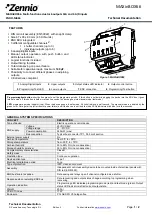
Figure 20-3. Operating Conditions and SleepWalking
BUCK
LDO
STANDBY
BACKUP
SleepWalking
PL0
ACTIVE
ACTIVE
RESET
IDLE
ACTIVE
IDLE
IDLE
STANDBY
PL0
PL2
BACKUP
RESET
SUPC.
VREG.SEL
LP VREG
MAIN VREG OFF
LDO
BUCK
Regulator modes
SleepWalking
PL2
Performance Level
Sleep
Mode
Sleep
Mode
20.6.4.4. Wake-Up Time
The total wake-up time depends on:
•
Latency due to Performance Level and Regulator effect:
Performance Level has to be taken into account for the global wake-up time. As example, if PL2 is
selected and the device is in standby sleep mode, the voltage level supplied by the ULP voltage
regulator is lower than the one used in active mode. When the device wakes up, it takes a certain
amount of time for the main regulator to transition to the voltage level corresponding to PL2,
causing additional wake-up time.
•
Latency due to the CPU clock source wake-up time.
•
Latency due to the NVM memory access.
•
Latency due to Switchable Power Domain back-bias wake-up time:
If back-bias is enabled, and the device wakes up from retention, it takes a certain amount of time
for the regulator to settle.
20.6.5. DMA Operation
Not applicable.
20.6.6. Interrupts
The peripheral has the following interrupt sources:
•
Performance Level Ready (PLRDY)
This interrupt is a synchronous wake-up source. See
Each interrupt source has an interrupt flag associated with it. The interrupt flag in the Interrupt Flag Status
and Clear (INTFLAG) register is set when the interrupt condition occurs. Each interrupt can be individually
Atmel SAM L22G / L22J / L22N [DATASHEET]
Atmel-42402E-SAM L22G / L22J / L22N_Datasheet_Complete-07/2016
197
















































